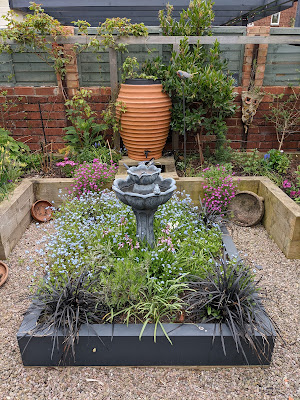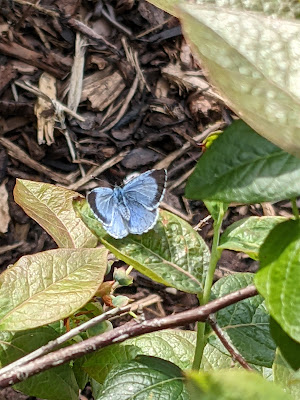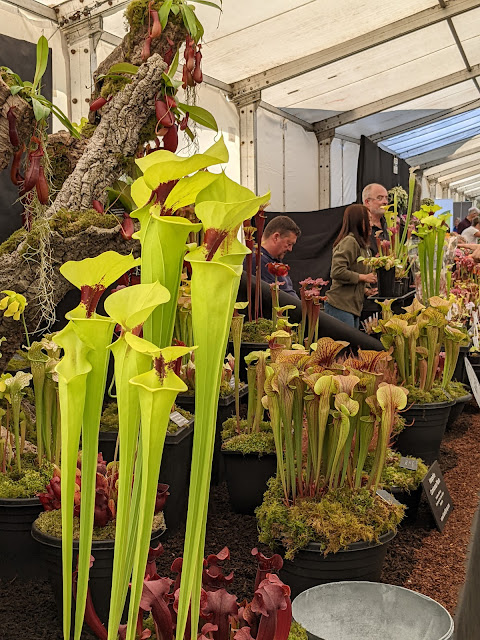Back in 2020, we made our very own bog garden from a discarded water closet following a bathroom upgrade. The pitcher plants thrived and produced several flowers...
.jpg) |
| The original and genuine bog garden |
New Carnivorous Plant Garden
Of course, this meant we now needed a replacement Bog Garden - although the original Bog Garden was really a Carnivorous Plant Garden as it contained only pitcher plants. Since carnivorous plants get all their nutrients from their captives, they must be grown in a nutrient-deficient medium. Many bog plants, however, need to source their nutrients from the growing medium. So by keeping the carnivorous plants separate, we can grow a wider variety of plants in our new & improved Bog Garden II. In order to maintain the moist soil conditions for a bog garden, we used a medium Salad/Veg Planter from Greenhouse Sensation. This comprises a 20 litre reservoir - holding water or a dilute nutrient solution - topped by a tray of growing medium. Strips of capillary matting draw water/nutrients from the reservoir into the growing medium. This watering system ensures water and nutrients are consistently and constantly available to the plants without the 'soil' medium becoming waterlogged and thereby inhibiting root development. I would expect the reservoir to need topping up about once a month - but I will monitor this. The reservoir will be topped up with water (rain or tap) most of the time with the occasional dilute nutrient solution when the plants are flowering. The Bog Garden II will also benefit from natural rainfall which may reduce watering frequency even more. I used a 50:50 mixture of home-made compost (sieved) and coir/perlite (4:1 by volume) recovered from a Salad/Veg Planter used the previous year to grow celery. The planter is situated with a South/Southwest aspect to benefit from long sunny days. This was Bog Garden II after planting up on 16th May 2022... The Beginnings of Bog Garden II... with Water Forget-Me-Not, Ragged Robin, Lady's Smock, Primula vialii (all from Kenchester Water Gardens) and a Geum bought at the Broxwood Court Plant Fair. Nearly two weeks later, the plants have settled in and the Primula vialii certainly seems to be appreciating its new environs... Bog Garden II (12 days later)This is an experiment so we will see how it develops; hopefully, adding more plants when/where possible. One advantage of the Salad/Veg Planter system is that it can be converted into a small greenhouse which could offer extra winter/frost protection. |





.png)
.png)

.JPG)
.JPG)

.JPG)


.png)
.png)









































